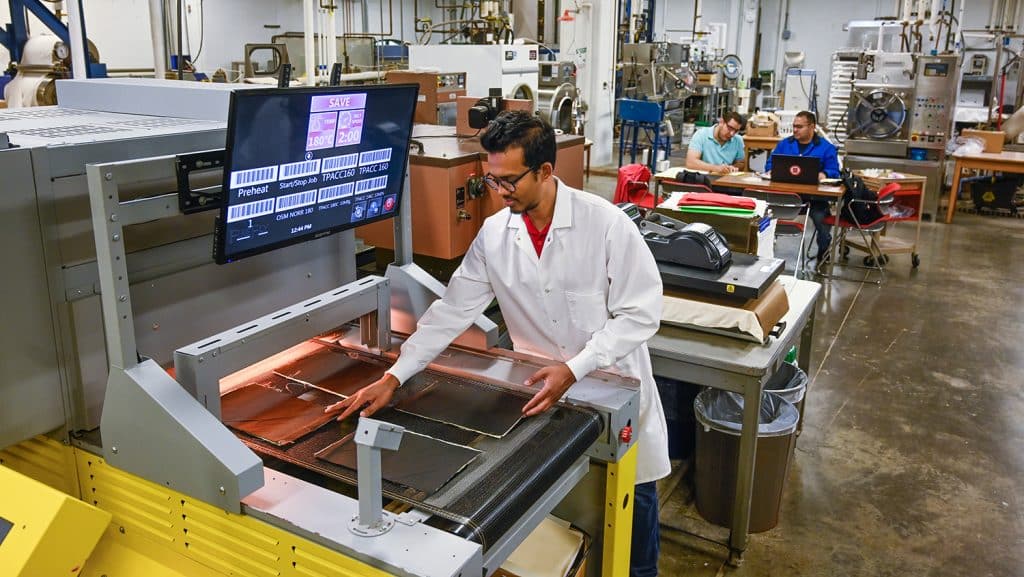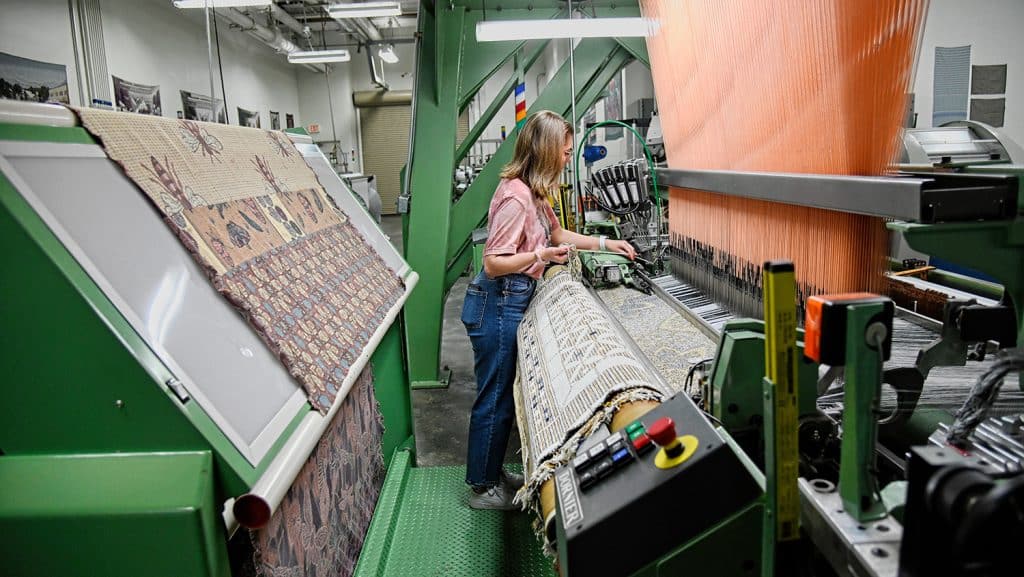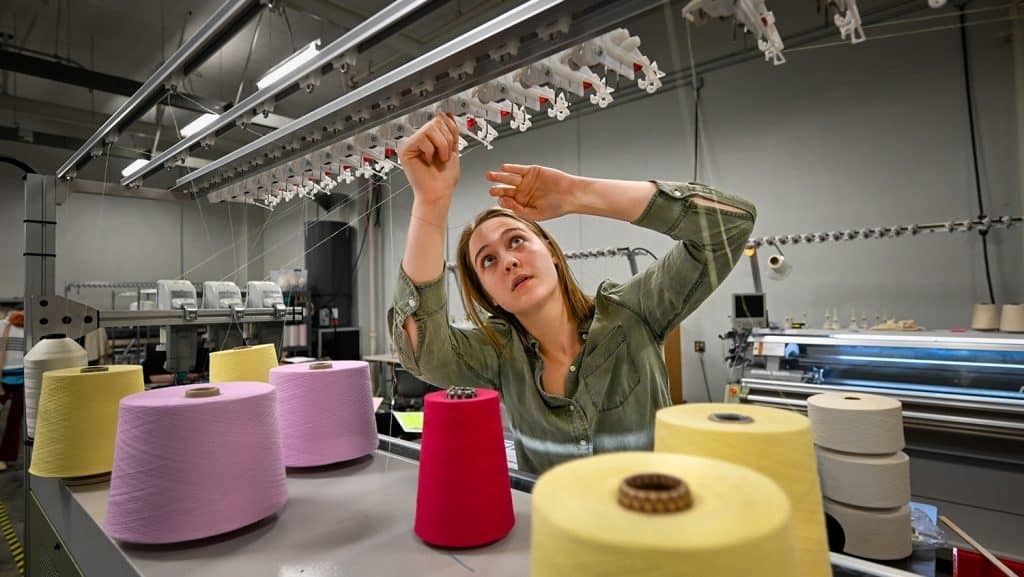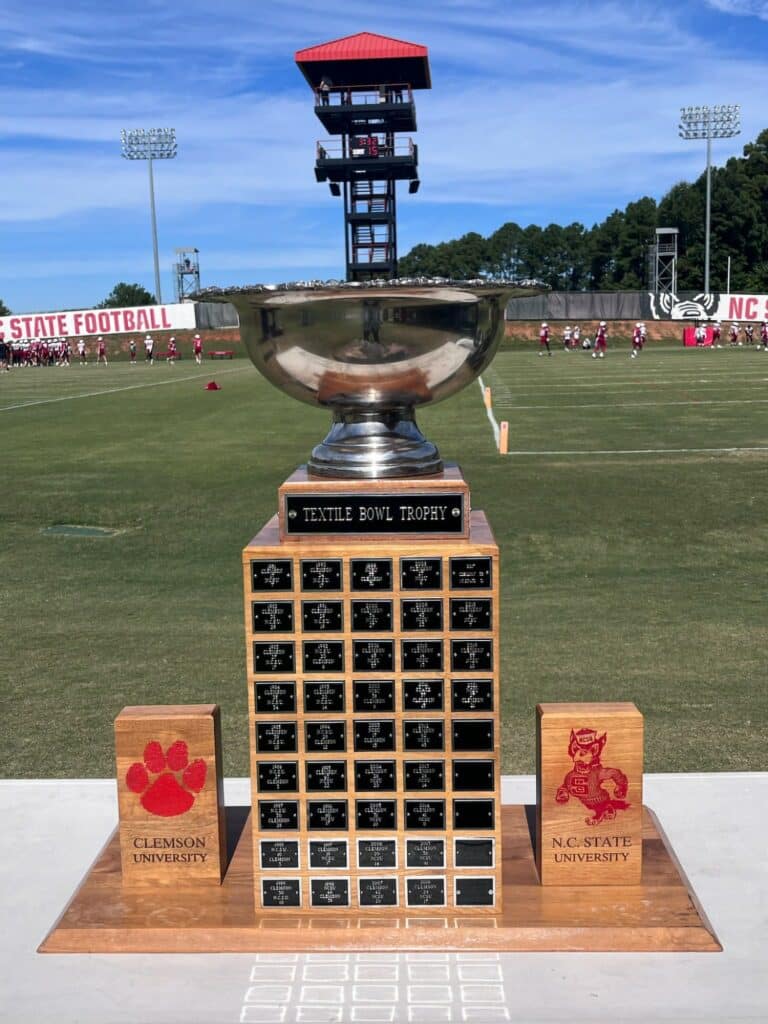Textile Bowl in Nationwide Highlight

Within the late Nineteen Seventies, the textile manufacturing {industry} that had lengthy propped up the economies of North and South Carolina and employed greater than 1,000,000 staff in each states took a few main hits.
On March 2, 1979, twentieth Century Fox Studios launched director Martin Ritt’s Norma Rae, a fictionalized account of the real-life battle of Crystal Lee Sutton to unionize the J.P. Stevens clothes mill in Roanoke Rapids, North Carolina, and to get her co-workers to affix the Amalgamated Clothes and Textile Staff Union.
The movie was nominated for the Academy Award for Greatest Image that yr (dropping to Kramer vs. Kramer), and Sally Area gained the Greatest Actress Oscar for her portrayal of Sutton, a single mother with three youngsters making $2.65 an hour folding towels on the plant, who led the harmful organizing marketing campaign in notoriously anti-union North Carolina.
In 1980, the Charlotte Observer assigned a half-dozen reporters and 4 editors to analyze the textile {industry} in each states for top incidences of byssinosis, a uncommon asthma-like respiratory illness brought on by respiration mud particulates from unprocessed cotton.
Similar to coal staff pneumoconiosis, or “black lung illness,” amongst coal miners, the incurable affliction grew to become referred to as “brown lung illness.”
On April 14, 1981, the Observer gained the Pulitzer Prize Gold Medal for Public Service for its sequence “Brown Lung: A Case of Lethal Neglect,” during which a complete of twenty-two articles and eight editorials uncovered the shortage of {industry} management and concern for the well being of its staff, lots of whom sought incapacity compensation for misplaced wages after contracting the illness.
For sure, the textile {industry} that supplied extra manufacturing jobs than another {industry} within the two states on the time wanted a serious constructive publicity increase to take it again to the pre-World Battle II days when textiles accounted for 40% of the state’s workforce.
A Soccer Answer
The North Carolina and South Carolina Textile Producers Affiliation got here up with an concept: The Textile Bowl, a regular-season faculty soccer sport pitting NC State and Clemson collectively on the fruits of Textile Week in each states. They even bought the Greenville, South Carolina-based Textile Corridor Company, the longtime promoter of the Southern Textile Basketball Event, to offer a trophy for the winner. The NCTMA and the SCTMA additionally kicked in $500 for every of the college’s textile scholarship funds.
On the time, each NC State and Clemson had been amongst a dozen universities across the nation that had textile applications that provided a full vary of textile levels, from undergraduate to Ph.D., to enhance the design and manufacturing of clothes items and textile manufacturing. The most important and most necessary of these faculties had been NC State, Clemson, Georgia Tech, Auburn and the Philadelphia College of Textiles.
The day earlier than that inaugural sport, hopes had been excessive, as one {industry} official mentioned, that each states had been in “the early phases of a brand new textile revolution.”
Oh, how that prediction got here true — however not in the best way the {industry} leaders needed.

Regardless of and due to a number of interventions from federal leaders in Washington, the textile {industry} started a speedy decline all through the Nineteen Eighties, dropping jobs to Asian producers with low-cost items and depressed labor prices. A whole lot of textile manufacturing vegetation in Upstate South Carolina and western North Carolina had been shuttered, as jobs and uncooked items had been shipped abroad.
Following the passage of the Canadian-U.S. Free Commerce Settlement in 1988 and the North American Free-Commerce Settlement in 1994 — created to get rid of commerce limitations inside the collaborating international locations — textile manufacturing in each states cratered. In 2003, the Fieldcrest-Cannon plant in Kannapolis, as soon as the world’s largest textile manufacturing facility, shut down for good. In a single day, 5,000 workers misplaced their jobs.
When the Nice Recession of 2007-09 hit, there gave the impression to be no hope for ever seeing textiles return as a serious manufacturing sector for Southern economies. Clemson even shut down its textile faculty and folded its textile diploma applications into departments inside its engineering faculty, following the mannequin of many different universities. It nonetheless does groundbreaking work within the discipline, however with out a separate faculty dedicated to it.
In search of Revolutionary Options
That left NC State as the one college within the nation with a college or faculty devoted solely to textiles, with greater than 1,000 degree-seeking college students enrolled yearly. That has led, in line with Wilson School of Textiles Dean David Hinks, to NC State main the best way in a brand new period of textile manufacturing, manufacturing and innovation.
Slowly, it has led the best way in restoring the once-dominant {industry} via superior know-how.

“Whereas I remorse that different universities felt like they need to get rid of their faculties of textiles, we did profit from that,” Hinks says. “We doubled down within the occasions of hardship, and we helped steer the {industry} via a few of these onerous occasions.
“Proper now, the longer term is brilliant. I’m actually optimistic about NC State’s management in offering analysis innovation.”
That innovation consists of all kinds of purposes, from discovering extra environmentally sustainable methods of dyeing blue denims (as soon as North Carolina’s largest textile product) to growing safer shelters for firefighters trapped in wild fires.
Famously, A. Blanton Godfrey, former dean of NC State’s School of Textiles, mentioned in 2012: “Norma Rae would have bother getting a job [at a textile plant]. But when she desires to take a seat at a pc terminal and program the reboot, that’s totally different. It’s a really totally different world.”
Greater transportation prices, tariffs and rising wages in China and different international locations helped revive home curiosity in textiles, together with an emphasis on “Made in America” manufacturers by big-box retailers.
In 2004, NC State even joined forces with UNC-Chapel Hill, Duke, six different analysis establishments and {industry} companions to create the North Carolina Analysis Campus on the positioning of the previous Fieldcrest-Cannon manufacturing plant in Kannapolis. It’s a thriving 350-acre analysis park dedicated to finding out human well being via diet and growing safer, more healthy meals.
In 2018, due to a $28 million reward by Frederick “Fred” Eugene Wilson Jr. and three generations of the Wilson household, the School of Textiles was renamed within the household’s honor, changing into simply the second named faculty at NC State.
Lately, the school shares a number of the duty for a contemporary resurgence of the textile {industry} — within the state, nationally and internationally — due to a focus on technological effectivity, sustainability and development, plus the event on Centennial Campus of the world’s first Nonwovens Institute.
A number of applications particularly are serving to reestablish textile manufacturing in North Carolina cities that after relied closely on native mills for employment by creating partnerships with local people faculties to provide staff educated in new applied sciences. Earlier this yr, the Wilson School of Textiles signed agreements with Gaston Neighborhood School in Dallas and Catawba Valley Neighborhood School in Hickory, creating 2+2 diploma applications that permit college students who full two-year affiliate levels at these faculties to be robotically accepted at NC State. A separate settlement additionally permits the 2 faculties, among the many oldest in North Carolina’s group faculty system, to be a part of NC State’s rising dual-enrollment Neighborhood School Collaboration program.

In August, these faculties joined forces with the Central American Technological College in Honduras to start textile coaching programs, with certificates applications, affiliate diploma applications, bachelor’s and graduate diploma applications and funding for scholarships, fellowships and internships.
When the COVID-19 pandemic hit in February 2020, Wilson School pivoted shortly to assist firms improve manufacturing of private protecting gear and continues to develop new and environment friendly processes. Now, North Carolina’s 600-plus textile and nonwoven manufacturing vegetation export a nationwide main $2 billion in items and merchandise.
“There was a notion that the textile {industry} was virtually achieved within the U.S., and that was by no means actually the case, to be sincere,” Hinks says. “It might be a shadow of what it was based mostly on employment and for certain many firms both went offshore or didn’t survive competitors.
“However we’ve got seen a resurgence in U.S.-made textiles. It’s coming again way more automated, with a lot better know-how and with a lot better-paying jobs.”
Once more within the Nationwide Highlight
However what about soccer? Wasn’t that the purpose of the Textile Bowl?
Nicely, 41 years in the past this yr, NC State jumped out to an early lead within the inaugural sport, due to a 13-yard Larmount Lawson landing run within the first quarter, the primary dashing landing given up by the Tiger protection in its first seven video games.
Clemson rallied with 10 factors within the second quarter, held the Wolfpack to only 63 yards of whole offense and cruised to a 17-7 victory. It was the seventh consecutive victory en path to successful the college’s first of three soccer nationwide championships.
Lately, the Tigers had been dominant within the sequence, which dates again to 1899, by successful eight in a row. The Wolfpack, nevertheless, broke the streak final yr with a double-overtime victory at Carter-Finley Stadium, shifting the general report in video games referred to as the Textile Bowl to 28-11 in Clemson’s favor.

Each groups are presently ranked within the High 10 of the Related Press faculty soccer ballot, Clemson at No. 5 and NC State at No. 10, and they’re going to meet within the forty first annual Textile Bowl at 7:30 p.m. at Clemson’s Memorial Stadium. It’s the primary time the Wolfpack has ever performed as a part of a sport with two top-10 opponents.
The sport shall be broadcast nationally by ABC in its featured 7:30 p.m. timeslot and ESPN will host its in style pregame present, GameDay, from the positioning from 9 a.m. to midday on the stadium and instantly previous to the sport.
The 2 soccer applications will all the time be rivals on the sphere, however it’s the establishments’ collaboration, cooperation and dedication within the worlds of textile analysis, schooling and outreach which have helped the textile {industry}’s revival in each states.




